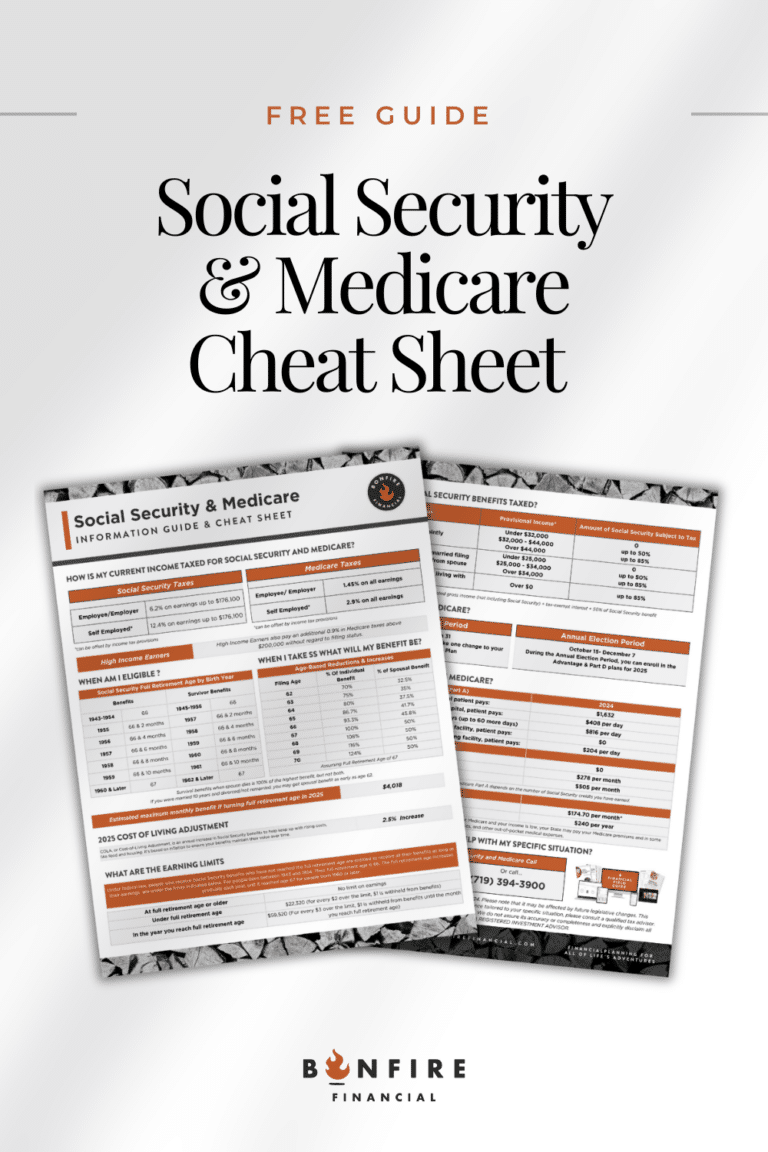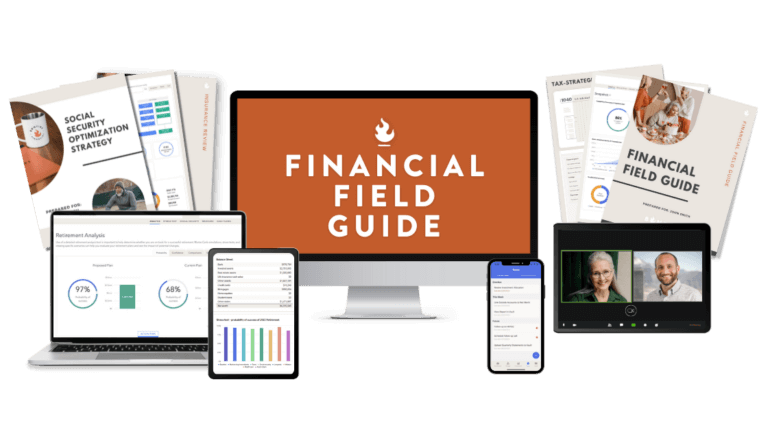If you’ve ever found yourself writing a hefty check to the IRS and thinking, “There has to be a better way,” you’re not alone. While taxes are a fact of life, the strategies for how much you pay and where that money goes are entirely up to you. Enter donor advised funds: a powerful, flexible, and surprisingly accessible way to give to the causes you care about while lowering your tax bill.
Listen Now: iTunes | Spotify | iHeartRadio | Amazon Music
This guide breaks down what donor advised funds are, how they work, and how high-net-worth families and everyday donors alike use them to make smarter financial decisions. Whether you’re charitably inclined, tax-curious, or both, this post is here to help you get strategic with your giving.
What is a Donor Advised Fund?
A donor advised fund (DAF) is like a charitable investment account. You contribute money or assets to the fund, receive an immediate tax deduction, and then recommend grants from that fund to your favorite nonprofit organizations over time. The money can also be invested within the fund, allowing it to grow tax-free, which ultimately means more money for the organizations you care about.
Think of it as a “charity checking account” that comes with major tax perks. Once the money is in, it can only go to qualified 501(c)(3) organizations. You can decide when and where to grant the funds, but you can’t use it for personal purposes or send it to family members.
DAFs are popular because they offer flexibility. You can take your time deciding which charities to support while immediately securing the tax deduction.
Why Not Just Donate Directly?
You can absolutely give directly to your favorite charity, and for many people, that’s the simplest route. But here’s the catch: thanks to the high standard deduction, many donors don’t actually get a tax benefit unless their charitable giving (combined with other itemized deductions) exceeds that threshold.
When you give directly without surpassing the standard deduction, you may miss out on a major tax-saving opportunity. Donor advised funds allow you to optimize your tax situation while maintaining the flexibility to support multiple causes over time.
The Problem with the Standard Deduction
As of 2024, the standard deduction is high enough that most Americans don’t itemize their deductions. For individuals, it’s $14,600. For married couples filing jointly, it’s $29,200. That means if your total itemized deductions (including charitable donations) don’t exceed that number, your donation might not reduce your tax bill at all.
So, if you donate $10,000 to charity in a year but don’t itemize, that generous gift doesn’t reduce your taxable income. In short: you’re giving without gaining any tax advantage.
By using a DAF and “bunching” donations, you can create a year where your deductions do exceed the threshold, allowing you to itemize and capture significant tax savings.
Introducing “Bunching”: How to Maximize Deductions
Bunching is a strategy where you group multiple years of charitable contributions into one year to exceed the standard deduction and itemize that year. You then take the standard deduction the following year.
By using a donor-advised fund, you can bunch your donations without giving all your charitable dollars to nonprofits at once. You contribute a lump sum to the DAF, take the tax deduction in that year, and then distribute the money to charities over time according to your schedule and priorities.
Bunching ensures you’re getting full credit for your charitable giving and allows you to maintain a consistent donation pattern to your favorite causes.
Real-World Example: Bunching in Action
Let’s say you normally give $20,000 per year to charity. That alone isn’t enough to exceed the standard deduction.
Instead, you decide to contribute $40,000 to a donor-advised fund this year, covering two years of donations. That bumps your itemized deductions high enough to exceed the standard deduction and gives you a solid tax break. Next year, you give nothing and simply take the standard deduction.
Meanwhile, your favorite charities still receive $20,000 this year and $20,000 next year; you’ve just front-loaded your contribution for tax purposes.
This strategy is even more powerful for high earners who routinely give significant amounts to charity but risk losing the deduction by spreading donations across multiple years.
How a Donor Advised Fund Works Over Time
Once money is in the DAF, you can:
- Recommend grants to IRS-qualified charities anytime
- Invest the funds for potential growth
- Give anonymously, if you prefer
- Name successors so your family can continue your legacy of giving
There are no required minimum distributions and no deadlines for giving it all away. You can be strategic and thoughtful with your philanthropy.
Funds inside a DAF can be invested in a range of portfolios, allowing you to potentially grow your contributions while deciding where they should eventually go. This additional growth means your charities could ultimately receive more than your original contribution.
Other Benefits of Donor Advised Funds
- Tax-Free Growth: Investments inside the fund grow tax-free, meaning more money for your cause
- Immediate Tax Deduction: You get the deduction the year you fund the DAF, not when you distribute to charity
- Organized Giving: Track all your donations in one place, simplifying record-keeping
- Flexible Timing: Donate assets now, decide later where to send the money
- Legacy Building: Involve your kids or grandkids in deciding where to give, instilling a culture of philanthropy
- Anonymity Options: Support causes privately if you choose
Advanced Strategy: Donating Appreciated Assets
One of the smartest ways to fund a DAF is with appreciated assets, like stocks or mutual funds. If you donate a stock that’s grown significantly, you avoid paying capital gains taxes and still get the full fair market value as a deduction.
For example, if you bought shares of a tech company early and the value has skyrocketed, donating the shares instead of selling them allows you to:
- Avoid capital gains taxes
- Take a full charitable deduction for the fair market value
- Maximize the impact of your gift
- This strategy can also work for real estate and privately held business interests with the right planning.
When a Donor Advised Fund Makes Sense
- You want to make a large charitable gift this year but aren’t sure which organizations to support yet
- You’re close to (but under) the standard deduction and want to bunch your giving
- You received a windfall, bonus, or sold a business and need a deduction
- You have highly appreciated assets and want to avoid capital gains taxes
- You want to build a multi-generational giving plan
- DAFs give you the flexibility to adapt your giving to your life events and cash flow needs.
Minimum contributions vary but often start around $5,000 to $25,000. Fees are typically between 0.60% to 1.00% annually, depending on the provider and investment options. When selecting a DAF provider, consider factors like investment options, fees, minimum grant sizes, and whether they align with the types of charities you want to support.
Key Considerations Before You Start
- You can’t take the money back: Once it’s in the DAF, it must be used for charitable giving
- Qualified Charities Only: No gifts to individuals, political groups, or family foundations unless qualified under IRS rules
- Tax Timing: You get the deduction when you contribute to the DAF, not when you grant the funds
- Fees: DAFs do have administrative and investment fees—be sure to review the fee structure
Final Thoughts: Take Control of Your Giving and Taxes
Giving to charity feels good. Doing it in a way that also reduces your taxes? Even better. Donor advised funds are one of the most underutilized tools in strategic financial planning, yet they’re simple to set up, flexible to use, and powerful in impact.
Whether you’re donating $5,000 or $500,000, you deserve to make the most of every dollar. By planning ahead and using tools like a DAF, you can give with more purpose, more power, and more long-term impact.
It’s not just about writing a check, it’s about building a legacy and ensuring your money makes the biggest difference possible.
Ready to Get Started?
If you want help exploring donor-advised funds or building a strategic giving plan, reach out to us. We’ll walk you through the options, set up the right structure, and help you make your money move with purpose, not just for tax season, but for life.
 Client Login
Client Login







